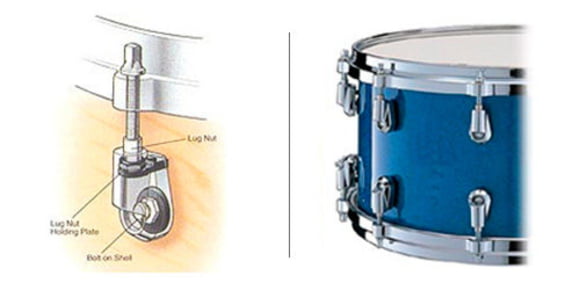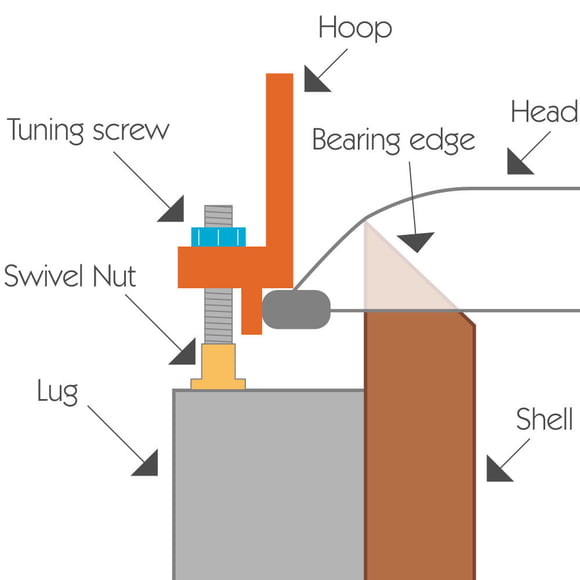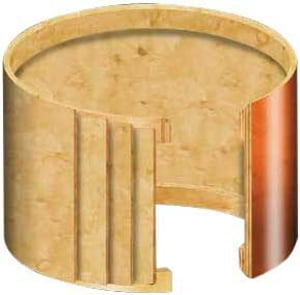4. Construction and More
The shell construction's basis is always a round cylinder of varying diameter, which is covered at the top by the batter head and at the bottom by the resonant head. Both heads are fixed to the shell using sturdy rims or hoops which are mounted on lugs on the shell. Depending on how tight you turn the screws, you change the sound of the drum, and this is how you tune it.
With bass drums and toms, the shells themselves consist of several layers of wood glued together (about 7-9). A small hole in the shell allows for pressure compensation while playing. The snare drum is often entirely made of metal, and this metal may be chrome-plated steel, copper, or aluminium. The different types of metal result in different individual sounds. There is more information on this in the guide on snares.
Besides the tuning lugs with their screws, floor stands and tom stands are also fixed to the shell. The more tuning lugs there are, the more regular the tension throughout the drum head will be and the more precisely you can tune it. What's important is that both screws and nuts stay put in their position even after long and intensive use - otherwise there's going to be a lot of rattling rather soon. And no drummer wants to keep taking her set apart to tighten the tuning screws (see the guide on hardware, too).


The edges of the shell on which the heads rest, the so-called bearing edges, should be absolutely smooth (see the chapter on bearing edges, too). The heads must rest on the shell 100% evenly. This is crucial for both the sound of the drum and the durability of the head. When you buy a drum you should absolutely not hesitate to take off the heads and have a look inside the shell. This also allows you to check how good the interior shell finishing is. Good shells have moisture-protection and a slightly roughened finish to muffle undesirable resonance.
You should also make sure that the shells are actually circular and that the different layers of wood are glued togetehr seamlessly and without noticeable transition. You can have some nasty surprises if you don't check. However, today's brand drums, even the more affordable models, are of good workmanship as a rule.
At this point we should also say some words on the outside finishing of the shell. Musicians have an enormous range to choose from. Standard sets are normally covered in plastic foil, often colourful foil. The range of colours available is so large that almost everyone is sure to find something they like. In the upper price ranges, you will also find more unusual designs - zebraskin, metallic and natural stone looks are all available. Premium drums tend to go for natural wood finish or piano lacquer.
The sophistication of the surface finish contributes to the set's sound characteristics, so that excellent sound is always partly the result of an excellent-quality finish. And this, of course has its price. But still, today the quality of both workmanship and sound is very satisfactory today in the lower price ranges, too.




